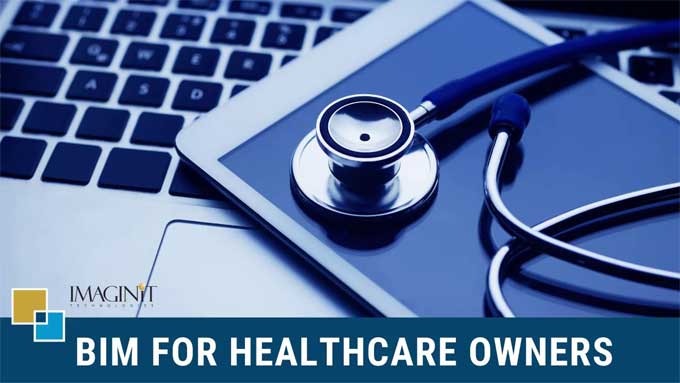Revolutionizing Healthcare Education: The Power of BIM and Its Tools for Doctors and Medical Students
Tweet
The healthcare industry is no stranger to embracing technological innovations to enhance patient care, diagnosis, and treatment. While the adoption of cutting-edge medical equipment and procedures is evident, there's a less-explored realm that has been transforming the way doctors and medical students learn and practice medicine: Building Information Modeling (BIM) and its accompanying tools. In this article, we will delve into how BIM technology is being utilized in the field of medicine, both in medical education and clinical practice.
Understanding BIM and Its Tools
What is BIM?
Building Information Modeling (BIM) is a sophisticated technology that integrates various aspects of a structure, including its geometry, spatial relationships, geographic information, and more. BIM enables the creation of a comprehensive digital model that offers real-time insights and data for efficient planning, design, construction, and operation.
BIM Tools
BIM tools encompass a wide range of software and technologies designed for modelling, simulation, and visualization. These tools are used across different industries, including architecture, engineering, and construction. Some well-known BIM software platforms and tools include Autodesk Revit, ArchiCAD, and Navisworks.
BIM in Medical Education
Anatomical Visualizations
One of the most powerful applications of BIM in medical education is the creation of detailed anatomical models. Medical students can use BIM tools to explore 3D representations of the human body, allowing for a more in-depth understanding of anatomy, which is crucial for diagnosis and surgery. These 3D models provide an interactive learning experience, making it easier for students to grasp complex concepts.
Surgical Simulations
BIM technology allows for the development of realistic surgical simulations. Medical students and surgeons can practice procedures in a virtual environment, providing a risk-free and immersive learning experience. These simulations enhance surgical skills, reduce errors, and improve patient safety.
Virtual Anatomy Labs
Virtual anatomy labs created with BIM tools offer a versatile and interactive environment for medical students. These labs provide access to a wide range of digital anatomical models and allow students to explore the human body in detail, including organs, muscles, and bones. Virtual anatomy labs are particularly beneficial for remote learning and distance education.
Collaborative Learning
BIM tools support collaborative learning among medical students. With the ability to work on the same virtual patient or model simultaneously, students can discuss cases, share insights, and collectively develop a deeper understanding of medical concepts. This collaborative approach mirrors real-world medical practice, where teamwork is essential.
BIM in Clinical Practice
Preoperative Planning
BIM technology has found its way into the operating room, where it plays a crucial role in preoperative planning. Surgeons can use 3D models of a patient's anatomy to simulate procedures and develop a precise surgical plan. This not only reduces the time spent in the operating room but also enhances the accuracy of surgeries, resulting in better patient outcomes.
Diagnostic Assistance
BIM tools are aiding doctors in diagnosing complex medical conditions. By integrating various medical images, such as MRIs, CT scans, and X-rays, into a single 3D model, doctors can gain a more comprehensive view of a patient's condition. This approach is particularly valuable in fields like orthopaedics and neurosurgery.
Medical Device Development
The design and development of medical devices, such as prosthetics and implants, benefit from BIM technology. Engineers and medical professionals collaborate to create customized devices that perfectly fit a patient's unique anatomy. This level of precision reduces the risk of complications and enhances patient comfort.
Telemedicine and Remote Consultations
In an era where telemedicine is on the rise, BIM tools support remote consultations between doctors and patients. By sharing 3D models and visual representations, doctors can explain medical conditions and treatment options to patients in a more understandable and engaging manner.
Challenges and Future Prospects
Data Security and Privacy
The use of BIM technology in medicine raises concerns about data security and patient privacy. It is crucial to develop secure systems and protocols to protect sensitive medical information in the digital realm.
Learning Curve
Medical professionals and students must overcome the initial learning curve associated with BIM tools. Comprehensive training and education programs are necessary to ensure effective utilization.
Cost
The acquisition and implementation of BIM technology can be expensive. Medical institutions and hospitals need to consider the cost-benefit analysis of investing in BIM tools for education and clinical use.
Standardization
Standardization of BIM in the healthcare sector is an ongoing challenge. Establishing common protocols and formats for medical BIM data is essential to ensure interoperability and data exchange between different systems.
AI Integration
The integration of artificial intelligence (AI) with BIM tools holds significant promise for medical applications. AI can analyze medical data, assist in diagnosis, and provide treatment recommendations based on a patient's unique health profile.
In the near future, we can expect further integration of AI and BIM to create intelligent medical systems that enhance healthcare delivery, diagnosis, and education.
To get online demonstration, watch the following video tutorial.
Video Source: The B1M
Conclusion
The use of BIM and its associated tools is revolutionizing the field of medicine, from medical education to clinical practice. Medical students benefit from immersive 3D anatomical models and surgical simulations, while doctors can enhance preoperative planning, diagnostic accuracy, and patient care. However, as with any emerging technology, there are challenges to overcome, including data security and the need for standardization.
As BIM technology continues to evolve and integrate with AI, it will play an increasingly vital role in shaping the future of healthcare, leading to improved patient outcomes, more precise medical procedures, and a better learning experience for future medical professionals. BIM is not just a tool for architects and engineers; it is a transformative force in medicine that holds the potential to revolutionize the healthcare industry.

Gallery
Feel free to contact us for BIM requirements. One of our representative will respond you within 24 Hours. Send us your projects requirement today and grow your project.
Explore More !







